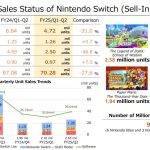The war has highlighted the danger of uncoordinated national defense planning in the face of a common threat. The integration of the defense market is necessary, and for this it is necessary to abolish the defense exemption in public procurement currently provided for in the TFEU.
Never in the 65 years of the EU’s existence has the urgency of a single market for defense equipment been more evident than in the last 12 months. The need for logistical and weapons support for the Ukrainian armed forces has placed the danger of uncoordinated national defense policies at the top of the political agenda.
Although the European External Action Service (EEAS) and the European Defense Agency (EDA) have recently taken action through Pesco (Permanent Structured Cooperation), much faster integration is needed, starting with a single market for defense supplies and harmonization of equipment standards.
These are classic issues of the single market, easily explained by everyone, but which are not formally the responsibility of the EU. Abolishing the defense contract exemption in EU public procurement rules in a limited revision of the Treaty it would be a powerful signal to show the EU’s determination to support Ukraine. In addition, it would lay the foundations for promoting a common EU defense policy, something that is long overdue.
Following the tank controversy, the war in Ukraine has shown all European citizens, and Europe’s partners and enemies, how dangerous (and reckless) uncoordinated national defense planning is in the face of a common threat. 30 years after the formal launch of the single market, the EU is still far behind when it comes to a common defence. National armies have their own equipment guidelines, their own logistics rules, and their own weapons priorities.
More than 70 years of NATO have brought some cooperation and alignment, but interoperability and technological capabilities remain very uneven. Duplications are widespread and economies of scale are not taken advantage of. Addressing these two shortcomings would allow for more efficient coordinated spending.
Obstacles remain despite progress
The good news is that Europe has recently agreed to intensify its defense cooperation, with the Pesco agreement and the launch of the EDA. Joint assessments of defense capabilities have been carried out for some time, coordinated by the EDA on the basis of Capability Development Plans provided by Member States, which are complemented by a Coordinated Annual Defense Review (CARD, for its acronym in English).
But latest report The Agency’s report, drawn up at the height of the war, is sobering reading and a stark reminder of the need for more cooperation, coherence and innovation in European defense. Cooperation is still not the norm, it is the exception, even with growing budgets. According to the report, national defense planning occurs in isolation. One example is the recent multi-billion dollar European Strategic Shield Initiative (ESSI) – or “missile shield” -, in which Germany is being seen to go free instead of developing it as a truly European project.
«Joint defense spending in the EU only reached 18% in 2022, well below the 35% target set by the EDA»
Integrating the European defense markets will be a long-term effort. Investments in defense equipment often pay for themselves over many years, so any integration effort will take a long time to take effect. The then President of the Commission, Juncker, raised in 2016 the need for a greater integration of defense in his speech on the State of the Union and announced the creation of the European Defense Fund. It was formally launched only as part of the current multiannual framework, with a budget of €8 billion, which comes on top of increased spending by Member States.
But joint defense spending in the EU only reaches 18% (2022), well below the 35% target set by the EDA. For the most part, it is held back by a myriad of regulatory barriers protecting national defense markets.
Europe has a sizeable defense industry, but it lags far behind the United States, which has a world market share of 39%. France has 11%, Europe as a whole more than 27%, much more than Russia, which has 19%. All commercial aircraft manufacturers are part of a broader aviation and defense industry, a duality that is also present in the aircraft supply chain. However, their quota on defense is much higher in the United States. Airbus and Boeing, for example, have a similar turnover, but with a much higher defense share in the latter.
Europe has a history of failed or delayed joint military equipment projects, which may be slowly improving with the Pesco program. Just before the war, in November 2021, the EU Foreign Affairs Council recommended more binding commitments to achieve the ambitions set by the Helsinki European Council in December 1999!
The war has been a stark reminder of the cost of falling behind in military capabilities, although this has been pointed out many times in the last 20 years. Following the Versailles European Council in May 2022, the European Commission proposed in July a reinforcement of the European defense industry through a short-term purchase contractbut limited to the EU budget (500 million euros) and only until 2024.
The moment to act has come
A year of bloody war in Ukraine means that European leaders must demonstrate their determination to learn from the mistakes and broken statements of the past, and show the world that the implications of this crisis have been fully realized.
As during the sovereign debt crisis with the creation of the European Stability Mechanism (ESM), a quick initiative is required for a limited revision of the Treaty in order to remove the defense exemption in public procurement (such as appears in article 346 (1b) of the TFUE). It should allow the creation of an EU-wide defense equipment market through the codecision procedure, thus it would be faster than current initiatives. It would also give an important signal that the EU wants to integrate Member States’ policies from the bottom up. It will also be the basis for a more autonomous EU within NATO, following the declaration by both organizations in favor of a “stronger and more capable European defence” earlier this year.
This initiative will make it possible to develop an EU defense industrial policy, highlight international dependencies and facilitate the integration of value chains in the European defense industry at a time when resources are scarce. It should also greatly improve capabilities and demonstrate a united front in supporting Ukraine and opposing Russia.
The EU has been vacillating for too long on collective defense capabilities. One year after the outbreak of this terrible war, there are no more excuses to continue hesitating.
Article originally published in English in the Web of CEPS.










